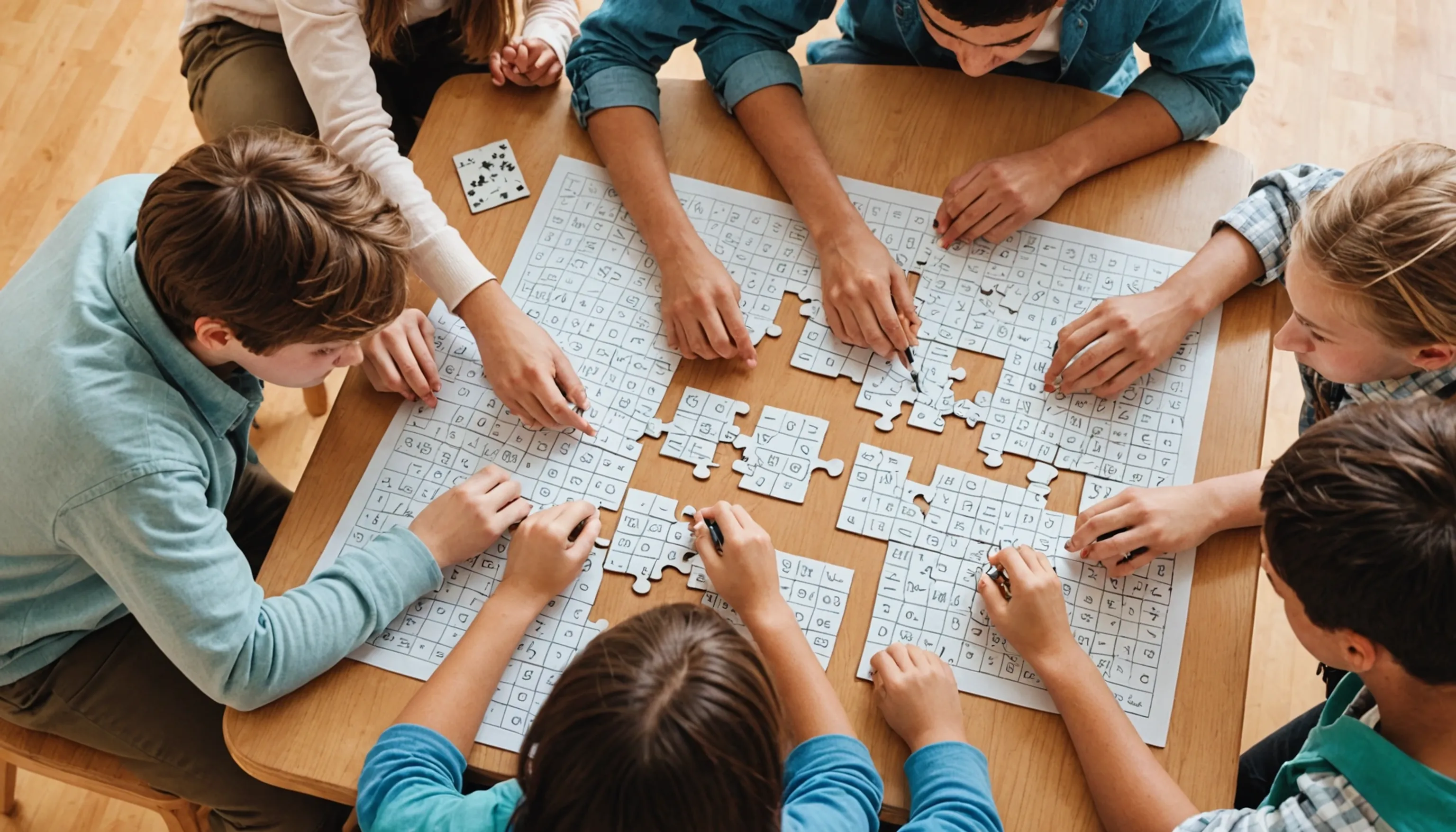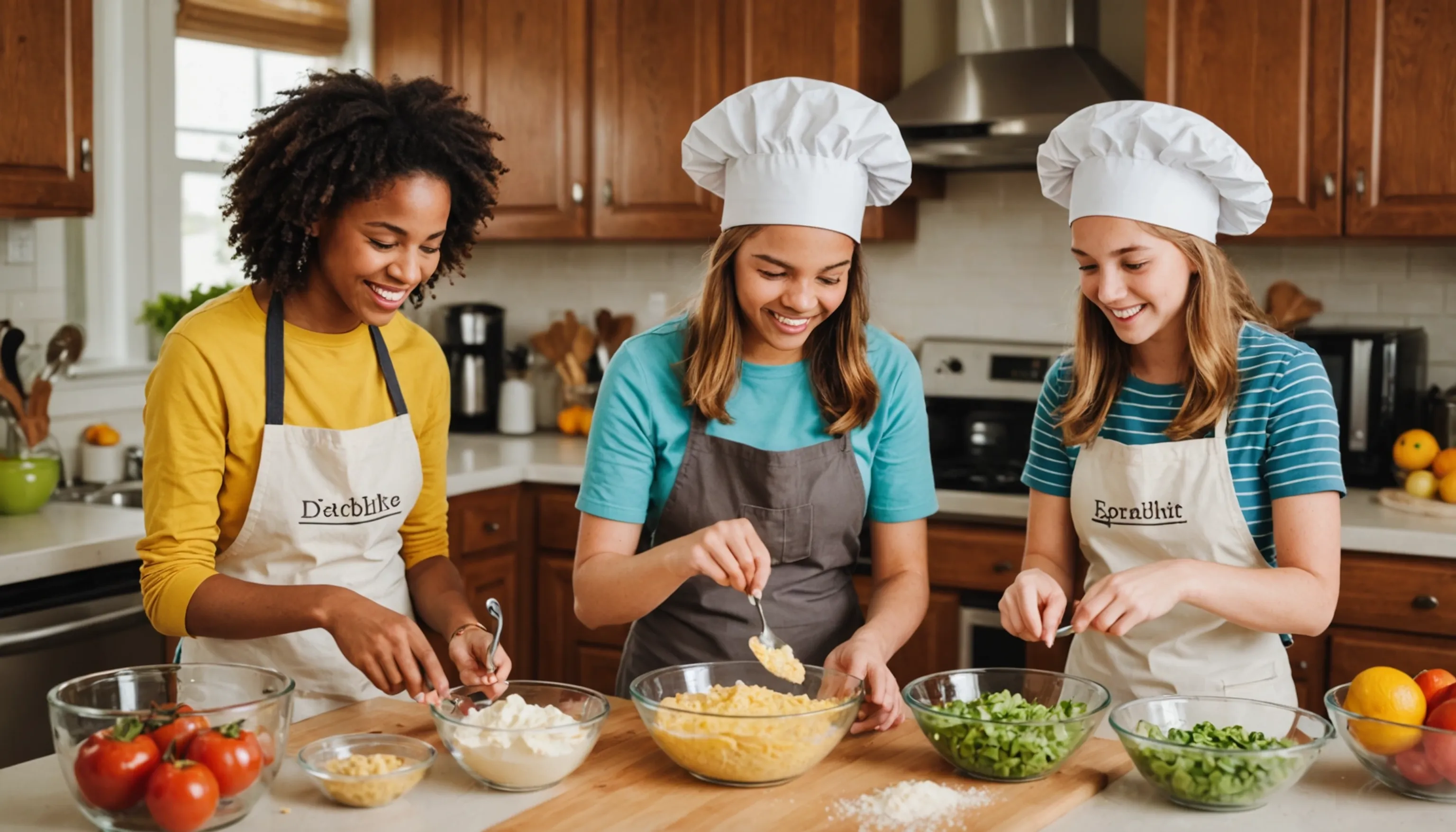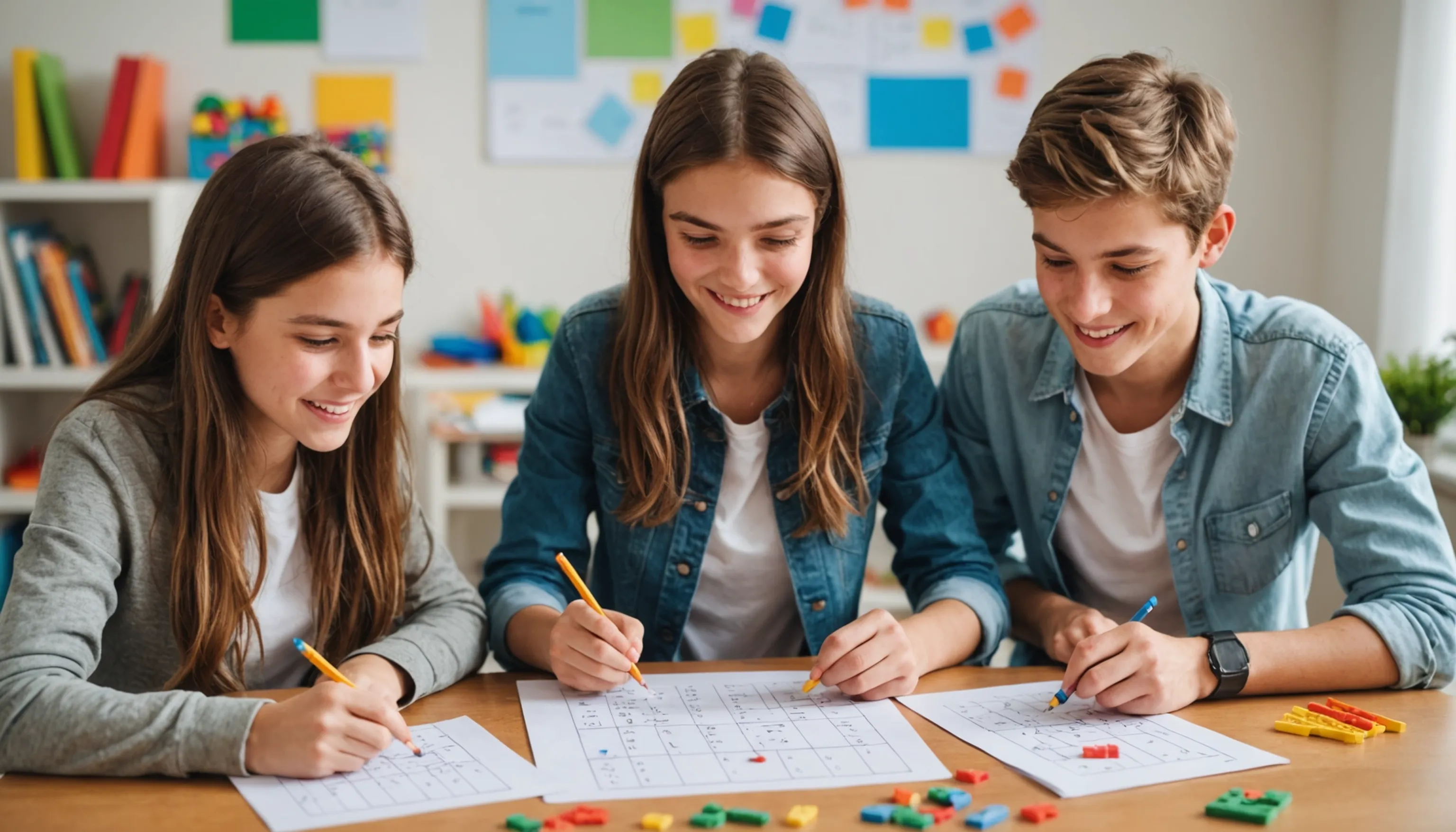Fun Math Activities for Teenagers
 HvWHenry van Wagenberg
HvWHenry van Wagenberg
Engaging Fun Math Activities for Teens
Engaging fun math activities for teens can turn the subject into an enjoyable experience. One great way to do this is by incorporating games that challenge their problem-solving skills. Activities such as math scavenger hunts can foster teamwork while reinforcing concepts. Additionally, using math in practical scenarios, like budgeting for a school event, helps students see the relevance of math in daily life.
Another effective method is to introduce creative projects, such as building models or creating math-related art. These activities not only make learning fun but also enhance critical thinking and creativity.
Why Fun Math is Important for Teenagers
Understanding why fun math is important for teenagers goes beyond just making math enjoyable. Engaging in fun math activities helps to build a positive attitude towards the subject, which can often be perceived as challenging or boring. When math is presented in a fun and interactive way, it encourages students to participate actively and fosters a love for learning.
Moreover, fun math activities promote essential skills such as critical thinking, problem-solving, and collaboration. For instance, math games that require teamwork can enhance communication skills and teach students how to work together effectively. These skills are not only crucial for academic success but are also valuable in real-life situations.
Additionally, incorporating fun into math education can help bridge the gap between abstract concepts and real-world applications. For example, when teens engage in activities like cooking or budgeting, they can see how math is used in everyday life. This relevance makes the subject more appealing and relatable.
Furthermore, fun math activities can cater to various learning styles, ensuring that all students have the opportunity to grasp challenging concepts. Visual learners may benefit from math art projects, while kinesthetic learners might thrive in hands-on activities.
Overall, making math fun is essential for fostering a lifelong appreciation for the subject and encouraging students to explore its vast applications in their lives.
Creative Math Games to Play at Home
Creative math games to play at home can turn math practice into a fun family activity. These games not only help teenagers reinforce their math skills but also encourage family bonding. One popular game is Math Bingo, where players fill out a bingo card with answers to math problems called out by a host. This game enhances quick thinking and reinforces basic operations.
Another engaging game is Math Jeopardy, where you can create categories based on different math topics. Family members can take turns answering questions for points, making it both competitive and educational. This format encourages teamwork and helps teens think critically about math problems.
Card games like Fraction War can also be beneficial. In this game, players draw cards and compare fractions, with the highest fraction winning the round. It’s a simple way to practice fractions while having fun.
Additionally, incorporating board games that involve strategy and numbers, such as Monopoly, can help teens apply math in real-life scenarios. Players must handle money, calculate expenses, and make financial decisions, all of which are valuable skills.
Lastly, digital math games and apps offer interactive platforms for learning. Many apps have engaging formats that keep teenagers interested while they practice various math concepts. By incorporating these creative math games into home routines, you can make math an enjoyable and exciting part of family life.

Fun Math Apps and Online Resources
In today's digital age, fun math apps and online resources have become essential tools for making math engaging and accessible for teenagers. These platforms not only provide interactive learning experiences but also cater to various learning styles and preferences.
One popular app is Khan Academy, which offers a vast range of math courses and practice exercises. With its gamified approach, students can earn points and badges as they progress, making learning feel like a game. This motivates teenagers to continue improving their skills while tracking their advancement.
Another excellent resource is Prodigy Math, an interactive game that combines math practice with a fantasy adventure. Teens create characters and embark on quests that require solving math problems to advance. This immersive experience keeps students engaged while reinforcing essential math concepts.
Mathway is a powerful app that helps students solve math problems step-by-step. It allows teenagers to input problems and receive detailed solutions, making it a valuable tool for homework help and understanding complex topics.
Additionally, websites like IXL and Coolmath Games offer a variety of math games and challenges that make learning enjoyable. These platforms often include adaptive learning features, ensuring that students work at their own pace and level.
By incorporating these fun math apps and online resources into their study routines, teenagers can develop a deeper understanding of math concepts while enjoying the process of learning.
Hands-On Fun Math Projects
Hands-on fun math projects are a fantastic way to engage teenagers in learning while allowing them to apply math concepts in practical ways. One exciting project is creating a scale model of their bedroom or a favorite place, which requires measuring dimensions and calculating area. Another idea is to design a budget for a hypothetical event, teaching teens about financial literacy and percentages. Additionally, creating geometric art using string and nails can combine creativity with math, reinforcing concepts like angles and symmetry. These projects not only make math enjoyable but also show its relevance in real-life situations.
Building a Math Scavenger Hunt
Building a math scavenger hunt is an innovative way to combine fun and learning for teenagers. This engaging activity encourages them to apply math skills in real-world contexts while promoting teamwork and critical thinking. To create an effective scavenger hunt, start by selecting a location, such as a park, school, or home, where participants can explore safely.
Next, develop a series of math-related clues or challenges that lead participants to various locations. For instance, you could incorporate geometry by asking them to find objects with specific shapes or calculate the distance between two points. Here are some ideas to include:
- **Measurement Challenges**: Ask participants to measure the height of a tree or the length of a bench using non-standard units, such as their own footsteps.
- **Word Problems**: Create real-life scenarios where they have to solve problems, like estimating how many steps it takes to walk across a field.
- **Puzzle Pieces**: Each clue can lead to a puzzle piece that, when assembled, reveals a final math-related challenge.
As they complete each task, participants gain points or rewards, adding a competitive element to the hunt. Not only does this activity reinforce math concepts, but it also encourages social interaction and physical activity, making math learning enjoyable and dynamic.

Cooking and Baking: A Fun Way to Explore Math
Cooking and baking present unique opportunities to explore math in a fun and practical way for teenagers. These activities require measurements, conversions, and timing, making them excellent real-life applications of math concepts. When teens engage in cooking, they can develop essential skills while enjoying delicious outcomes.
One primary aspect of cooking is measuring ingredients. Whether it’s using cups, tablespoons, or grams, understanding these measurements helps them grasp concepts of volume and weight. For instance, when a recipe calls for 2 cups of flour, teens learn about fractions and how to accurately measure ingredients. This can be a hands-on way to understand ratios and proportions as they scale recipes up or down.
Baking also introduces concepts such as temperature and time management. Teens can explore how different temperatures affect the cooking process, learning about the science behind baking. They can experiment with adjusting baking times and temperatures, creating a practical understanding of linear equations and their effects on outcomes.
Additionally, cooking encourages creativity and planning. When teens create their own recipes or modify existing ones, they practice problem-solving and critical thinking. They can calculate nutritional information and discuss costs, integrating math with healthy eating choices.
Overall, cooking and baking make math tangible and enjoyable, allowing teenagers to see its relevance in everyday life while developing essential skills that will benefit them in the kitchen and beyond.
Math Art Projects to Spark Creativity
Math art projects offer an exciting way to blend creativity and mathematical concepts, making learning enjoyable for teenagers. These projects not only enhance artistic skills but also reinforce fundamental math principles, leading to a deeper understanding of both subjects.
One engaging project is creating geometric art using shapes like triangles, squares, and circles. Teens can explore symmetry and patterns by designing mandalas or tessellations. This hands-on experience allows them to visualize geometric concepts while expressing their artistic flair. They can use tools like compasses and rulers to create precise designs, reinforcing their understanding of measurement and angles.
Another captivating idea is to create a mathematical quilt. Each square can represent a different mathematical concept, such as fractions, decimals, or algebraic equations. This project encourages collaboration, as teens can work together to piece together their squares, learning from each other while applying various math skills.
Additionally, incorporating technology, teens can experiment with digital art tools to create fractal designs. Programs like GeoGebra or Desmos allow them to visualize and manipulate equations to produce stunning visuals, sparking interest in advanced math topics.
Math art projects not only foster creativity but also encourage critical thinking and problem-solving. By blending math with art, teenagers can appreciate the beauty and relevance of mathematics in the world around them, making learning a multifaceted and enjoyable experience.
Incorporating Fun Math into Daily Life
Incorporating fun math into daily life can make learning more engaging for teenagers. One effective way is by using everyday situations to highlight math concepts. For instance, cooking can involve measuring ingredients, which teaches fractions and conversions. Shopping trips can be turned into opportunities for practicing budgeting and calculating discounts.
Additionally, playing games like board games or card games that require strategy and math can make learning enjoyable. Even simple activities like estimating travel times or distances can reinforce math skills. By seamlessly integrating math into daily routines, teens can appreciate its relevance and practicality.
Using Real-Life Situations to Teach Math
Using real-life situations to teach math can significantly enhance a teenager's understanding and appreciation of the subject. By connecting mathematical concepts to everyday experiences, students can see the practical applications of math, making learning both relevant and engaging.
One effective method is to incorporate financial literacy into lessons. For example, when discussing budgeting, teens can create a budget for a hypothetical event or their own allowance. This exercise helps them understand addition, subtraction, and percentages while planning for expenses like food, decorations, and entertainment.
Another valuable approach is to use sports statistics. Analyzing player performance, calculating averages, and predicting outcomes can make math more relatable. For instance, students can track a favorite team's game scores and calculate their winning percentages, applying concepts like mean, median, and mode.
Cooking and baking also provide excellent opportunities for practical math lessons. Measuring ingredients requires understanding volume and conversions, while adjusting recipes encourages the use of ratios and proportions. Teens can learn to double or halve recipes, reinforcing their understanding of fractions and multiplication.
Additionally, incorporating travel planning into math lessons can spark interest. Students can calculate distances, estimate travel times, and convert currencies, providing a hands-on experience with geometry and measurement. By using real-life situations to teach math, educators can foster a deeper understanding of the subject, encouraging students to view math as a vital and applicable skill in their daily lives.
Making Math Relevant with Everyday Activities
Making math relevant with everyday activities is crucial for engaging teenagers and helping them recognize the subject's significance in their lives. By integrating math into familiar tasks, educators and parents can foster a deeper understanding and appreciation for the subject.
One effective way to achieve this is through grocery shopping. When teens accompany parents to the store, they can practice skills such as budgeting, calculating the total cost, and comparing prices. For example, they can learn about percentages by calculating discounts on sale items, reinforcing their understanding of basic arithmetic and financial literacy.
Cooking is another fantastic opportunity to apply math in real-life scenarios. Preparing meals requires measuring ingredients and adjusting recipes, which involves fractions and conversions. Teens can experiment by doubling or halving recipes, enhancing their grasp of ratios and proportions while enjoying the results of their culinary efforts.
Sports also provide a fun context for applying math concepts. Analyzing game statistics, calculating averages, and even tracking personal performance can make math engaging. For instance, students can determine their shooting percentage in basketball or analyze a team's winning streak, helping them connect math to their interests.
Finally, incorporating technology and apps into daily routines can enhance learning. Utilizing math-related games or educational apps can make practice enjoyable while reinforcing skills. By making math relevant through everyday activities, teens can develop a positive attitude toward the subject, seeing it as an essential tool for navigating their lives.
